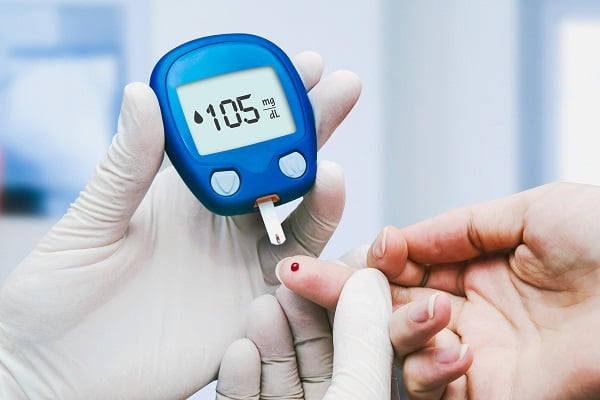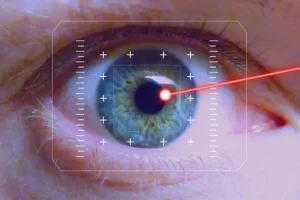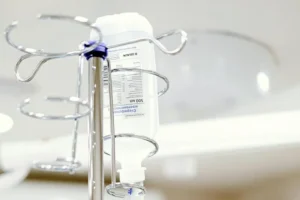Diagnosis of Diabetes
- Updated on: Jul 10, 2024
- 4 min Read
- Published on Sep 27, 2019


How is Diabetes diagnosed?
Diabetes is one of the major health problems in the world, especially in developing countries. The World Health Organisation (WHO) predicts that the number of diabetic people will increase and will double in the next couple of decades. Majority of the diabetes cases occur in the developing countries.
The symptoms of type 1 diabetes often occur suddenly. Because of this blood sugar levels should be checked regularly. Read about signs and symptoms of diabetes.
Out of an estimated 24 million people with diabetes, nearly 1/3rd do not know they are diabetic. People with type 2 diabetes have no such diabetic symptoms in the beginning.
Screening Guidelines
The American Diabetes Association has given guidelines for screening people for diabetes.
- Older than 45 years of age:- Anyone older than 45 years of age is advised to receive an initial blood sugar level screening to check any diabetic symptoms and if the test is normal even then regular screening after every 3 years should be done to monitor diabetes.
- People with any age having Body Mass Index (BMI) more than 25:- People who have BMI more than 25 should be screened for blood sugar level as they are at risk of getting diabetes. People who have additional risk factors such as sedentary lifestyle, premedical history of polycystic ovary syndrome, high blood pressure and a baby delivery who has weight more than 9 pounds, high cholesterol level, gestational diabetes history and history of heart disease should receive screening for blood sugar level to check for diabetes.
Healthcare professionals can diagnose for diabetes, pre-diabetes and gestational diabetes through blood test. It is determined by higher level of blood glucose or blood sugar.
The testing and screening of diabetes helps doctors to detect diabetes earlier and work with patients to manage and treat the disease at early stages for a healthy life and to prevent associated complications.
It also helps in changing one’s lifestyle to manage weight so as to avoid developing type 2 diabetes at a further stage of life. Read about causes of diabetes.
Diagnosis of pre-diabetes and type 1 and 2 diabetes
The diagnosis of prediabetes and type 1 and 2 diabetes are done by following test methods.
Fasting Plasma Glucose test
This blood test is done on an empty stomach in the morning after 8 hours of fasting or without eating anything except having just plain water. The test detects pre-diabetes and diabetes conditions.
Fasting blood sugar level of less than 100mg/dL is normal. Blood glucose level from 100-125 mg/dL is considered as prediabetes.
On more than one event, Glucose level of 126 mg/dl or above, indicates diabetes.
Random plasma glucose test
This blood test is done with a sample taken anytime during the day (even without fasting). A random blood glucose or blood sugar level of 200 mg/dL or above that is 11.1 mmol/L or above indicates diabetes.
Oral glucose tolerance test
This test is done after 8 hours of fasting that is without eating anything and 2 hours of drinking glucose beverage.
The test measures prediabetes and diabetes conditions. Blood sugar level of less than 140 mg/dL that is 7.8 mmol/L is normal and more than 200 mg/dL that is 11.1 mmol/L of blood sugar level after two hours shows diabetes.
A reading between 140 and 199 mg/dL shows prediabetes.
Positive test result of the fasting plasma glucose test or the oral glucose tolerance test should be confirmed by repeating the test on a different day. A person when first diagnosed with the diabetes is tested for zinc transporter 8 autoantibody test. This blood test along with other information and test results helps in diagnosing and identifying type 1 diabetes.
Glycated hemoglobin (A1C) test
This blood test indicates the average blood glucose level for past 2 to 3 months. The test measures the percentage of blood sugar attached to hemoglobin. A higher blood sugar level is indicated by a higher percentage of hemoglobin attached with sugar.
HbA1c reading of 48 mmol/mol that is 6.5% or higher on two separate tests indicate diabetes. An A1C between 5.7 and 6.4 % indicates prediabetes. The A1C below 5.7 is normal blood sugar level.
To detect type 1 diabetes and if the type 1 diabetes is suspected , urine test is done to look for the presence of ketones which are produced when muscle and fat tissues are used for energy in the body because the body doesn’t possess sufficient insulin to use glucose in the body.
Doctors also run a test to check autoantibodies that are destructive immune system cells associated with type 1 diabetes.
Diagnosis of Gestational diabetes
Doctors evaluate your risk factors for gestational diabetes early in your pregnancy.
High risk of gestational diabetes
If a lady is obese at the starting of the pregnancy or having a family history of diabetes such as her mother, siblings, or child have diabetes, she should be tested for gestational diabetes by the doctors at her first pre natal visit.
Average risk of gestational diabetes
A lady in her pregnancy may have average risk of getting gestational diabetes. She is checked for it sometime during her second trimester typically between 24 and 28 weeks of pregnancy.
The diagnosis and screening of gestational diabetes is done by following methods.
Initial glucose challenge test
A lady first undergoes the glucose challenge test also known as glucose screening test. In this test, after 1 hours of drinking liquid containing glucose, the blood sample is taken. The sample is then tested. Fasting is not needed for this test. Blood sugar level below 140 mg/dL is considered normal. A too high blood sugar level than normal puts the woman at risk of getting gestational diabetes. An oral glucose tolerance test is done further to determine diabetes.
Oral glucose tolerance test (OGTT)
This test measures glucose levels in your blood after 8 hours of fasting. The blood is taken after 8 hours of fasting.
After taking the blood sample, you have to drink liquid containing glucose. For the diagnosis of gestational diabetes, the blood is taken after every 2-3 hours. High blood glucose level in any of the two tests that is during fasting, after 1 hours, 2 hours or 3 hours of taking glucose liquid indicates the gestational diabetes.
This test is also done to detect type 2 diabetes and prediabetes conditions in people who are not pregnant.
Once the diabetes is diagnosed, your doctor will develop a care plan for you.












